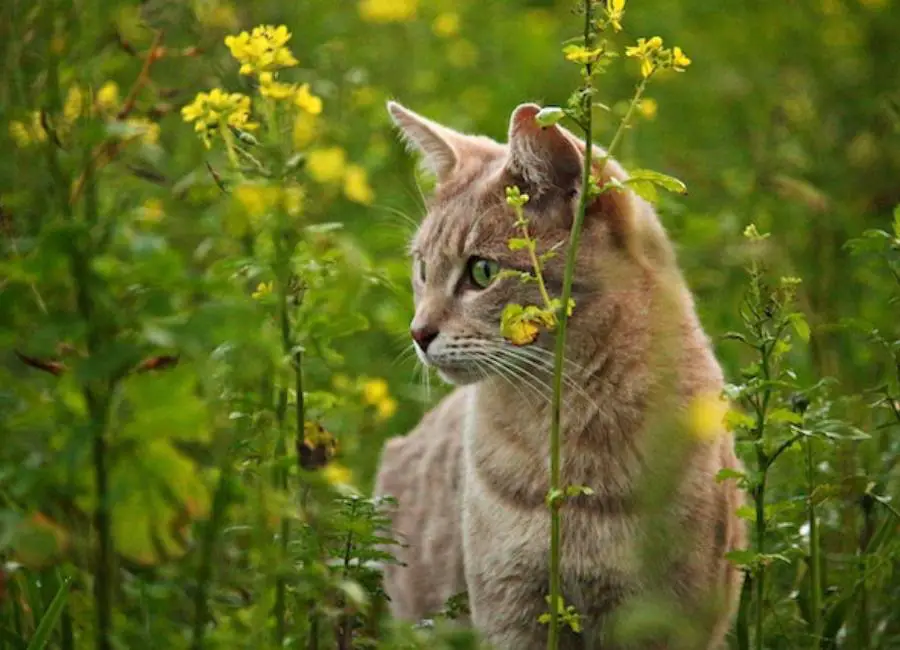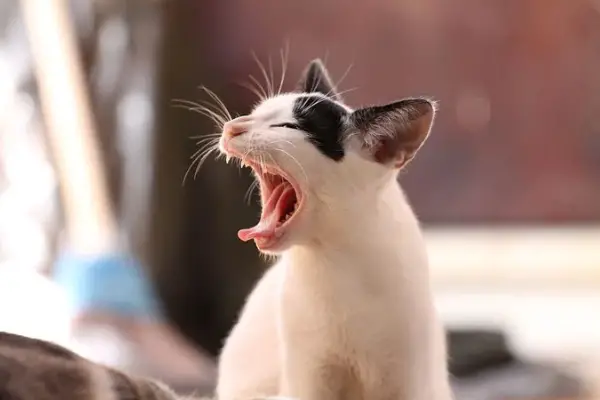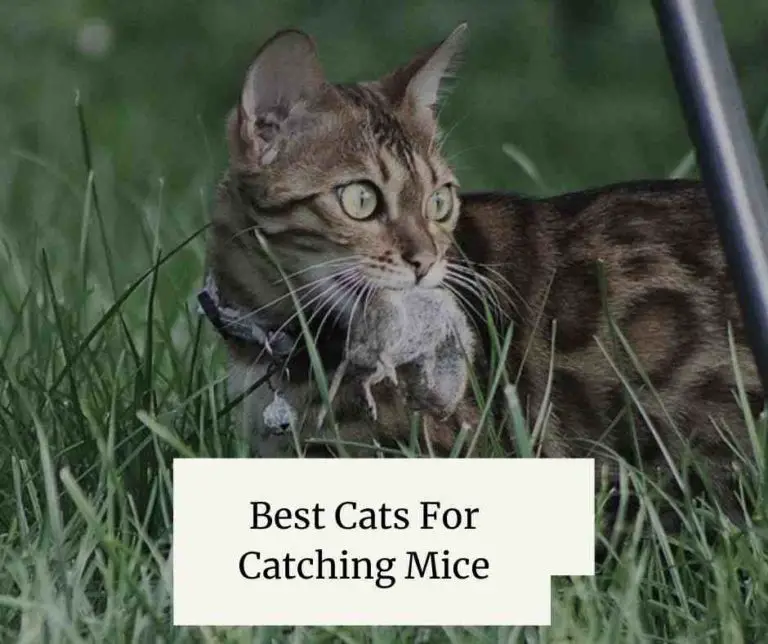10 Factors Affecting Feral Cats Life Expectancy

Let’s break down feral cats life expectancy…
Feral cats may have a bad reputation, but their lifespan is actually quite fascinating.
In this blog post, we’ll explore the various factors that can affect their life expectancy, from nutrition and exercise to genetics and environmental conditions.
We’ll also discuss how you can help feral cats by providing them with food, shelter, and veterinary care.
So, get ready to learn more about these amazing felines and how you can make a difference in their lives!
What are feral cats
Feral cats are domestic cats (Felis catus) that are not owned, live outdoors, and avoid interacting with people.
They are not accustomed to human interaction and resist being handled or petted.
Feral cats may be found living in a range of environments, including gardens, alleyways, and abandoned houses.
They often reside in groups known as colonies. They often hunt tiny animals and scavenge for food to live.
If they are not spayed/neutered and maintained appropriately, feral cats have a high rate of reproduction and can quickly cause problems in inhabited areas.
Feral Cats Life Expectancy
Feral cats typically have a shorter life expectancy compared to domestic cats, usually ranging from 3 to 7 years or more on average.
However, this can be extended with proper nutrition and veterinary care, as well as providing them with food and shelter.
Factors that can affect a feral cat’s life expectancy include genetics, nutrition, exercise, environmental conditions, and access to veterinary care.
With the right care and support, feral cats can live longer and healthier lives.
Factors Affecting Feral Cats Life Expectancy
Here are some common factors affecting feral cats’ life expectancy:
Lack of human support
Support and care from people who provide them food, water, and shelter can prolong the lives of feral cats.
Although some people perceive feral cats as a nuisance or a danger to animals.
Many others see them as important community members and take compassionate measures to manage and care for them.
Lack of human support plays an important role in feral life expectancy.
Territory issues
Due to territorial nature, feral cats may fight or compete with other cats for access to food, water, and shelter, which can shorten their lifespan.
Compared to cats who are always on the move or engaged in cat disputes, cats that create a stable area and avoid conflicts may have a better chance of surviving.
Access to food and water
The quantity and quality of food and water can have an impact on the lifespan of feral cats.
They may experience starvation, dehydration, or poisoning if they must seek for food and water or rely on unreliable sources, such trash or puddles.
Exposure to diseases
Since they are not immunized, dewormed, or given flea and tick treatments, feral cats are more likely than domestic cats to get infectious illnesses.
They may also spread illnesses like rabies, feline leukemia virus (FeLV), feline immunodeficiency virus (FIV), and upper respiratory infections to other feral cats in their colony or to other animals they come into touch with (URIs).
Trauma
Feral cats may sustain wounds or mishaps that decrease their lifespan, including cat fights, dog attacks, automobile accidents, falls from great heights, and becoming caught in traps or snares.
These activities can cause trauma to feral cats which can impact their life expectancy.
Environmental factors
The environment in which feral cats live, including harsh weather, natural catastrophes, and exposure to contaminants like pesticides, poisons, and chemicals, can affect how long they live.
These conditions will directly affect the lifespan of any feral cat.
Human interference
Human activities, such as catching, moving, poisoning, shooting, or purposeful injury, can reduce the lifespan of feral cats.
Their normal activities and social structures, like as mating, hunting, and communication, can also be disrupted by human meddling.
Genetic predispositions
Given that particular breeds or lineages may be more predisposed to specific medical issues or developmental abnormalities, genetics can have an impact on the lifespan of feral cats.
Lack access to veterinary care
Access to veterinary care, such as spaying and neutering, immunization, deworming, and treatment of wounds and diseases, can lengthen the life expectancy of feral cats.
Yet, due to their untamed and evasive character, scarcity of resources, and human attitudes toward them, feral cats frequently have restricted access to veterinary treatment.
Predation
Predation by other animals, such as coyotes, foxes, eagles, or huge birds of prey, can reduce the lifespan of feral cats.
Domestic cats or dogs that are permitted to wander freely in the same area may also become prey for feral cats.
How to improve feral cat lifespan
There are some steps that can be taken to increase feral cat chances of survival and improve their quality of life:
Reduce environmental hazards
Cats who live outside are subject to a wide range of environmental risks, including pollutants, vehicles, and other animals.
By keeping them away from hazardous locations like busy highways or regions with high amounts of pollution, you may lessen their exposure to these risks.
Provide food and water
Feral cats frequently have to hunt for food, which can result in sickness and undernutrition.
Regularly giving them food and water helps keep them healthy and lower their chance of getting sick.
Trap-Neuter-Return (TNR)
In a TNR program, stray cats are captured, fixed up (neutered or spayed), and then released back into the wild.
This reduces the number of cats and stops the spread of illness. Sterilized cats also often live longer and in better condition.
Provide shelter
Outside cats are vulnerable to the elements, which may be hazardous during severe weather.
To help shield cats from the cold, rain, and wind, consider providing shelter, such as a cat house or an insulated box.
Collaboration
To organize efforts to care for feral cats in your neighborhood, work with regional animal welfare groups.
You may have a greater influence and enhance the lives of more cats by combining your efforts and sharing information.
Socialization
Try to spend time with and acquire the trust of feral cats in order to socialize them, if at all feasible.
Cats who have received socialization are more likely to be adopted and to live longer in devoted households.
Educate the community
Feral cat populations can be decreased by raising awareness of the value of responsible pet ownership in the community.
Urge pet owners to spay and neuter their animals and oppose leaving abandoned cats.
Monitor their health
Watch out for any indications that stray cats may be unwell or injured.
This could entail changes in behavior, weight loss, or wounds.
Their chances of survival can be increased by early diagnosis and treatment of health problems.
Provide vet care
Despite the fact that feral cats might be challenging to manage, it’s crucial to provide them regular veterinarian treatment.
This might involve receiving immunizations, a deworming, and medical attention for any wounds or infections.
Learn more about where feral cats sleep.
Threats to feral cat lifespan
Many dangers that threaten feral cats can significantly shorten their lives.
Malnutrition, illness, predation, and severe weather are a few of these.
Moreover, feral cats are frequently the targets of animal abuse and may experience stress or damage as a result of human contact.
Feral cats can have longer, healthier lives by being spayed and neutered, as well as by being given food and shelter, which can help to lower their number.
Learn more about adopted stray cat behaviors.
Conclusion
Feral cats are fascinating creatures with many unique characteristics and life expectancies that can vary greatly depending on environmental factors.
With proper nutrition and veterinary care, as well as providing them with food and shelter, we can help ensure they have a better chance of living longer, healthier life.
By understanding the factors that affect their life expectancy, we can work together to make a difference in the lives of these amazing felines.


![Do Cats Need To Go Outside [Pros & Cons] Do Cats Need To Go Outside](https://petcreeks.com/wp-content/uploads/2021/08/Do-Cats-Need-To-Go-Outside-768x644.jpg)



